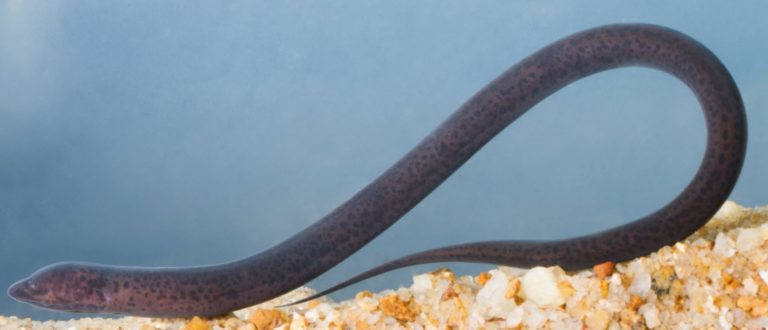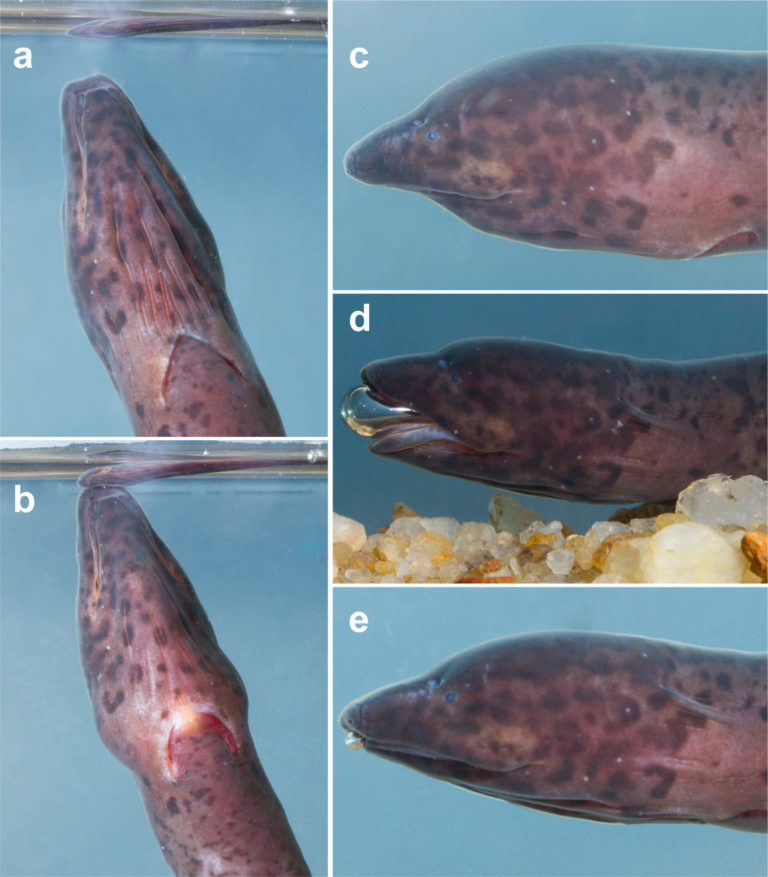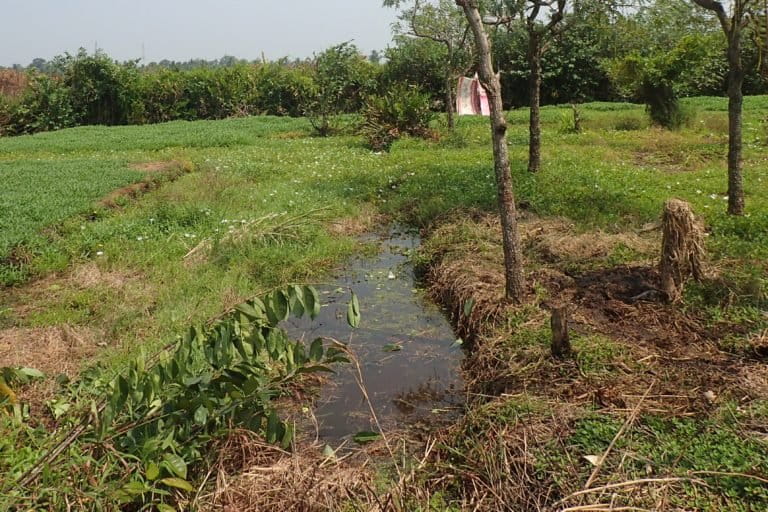- New specimens of Sri Lanka’s only endemic swamp eel, locally known as vel anda (Monopterus desilvai), from vegetable plots in the island’s west highlight the need for further study of the coastal floodplains.
- The endemic brown eel is able to breathe air, which it stores in a pair of primitive lung-like pouches, live in oxygen-poor environments and survive outside of water, as long as its skin remains moist.
- Researchers have called for the urgent conservation of the species’ habitat and identified landfilling as the main threat to its conservation.
COLOMBO — When a team of researchers decided to scan some vegetable plots in a murky swamp area in western Sri Lanka, they were looking for live specimens of what vegetable farmers commonly referred to as vel anda, or the lesser swamp eel (Monopterus desilvai), a species endemic to Sri Lanka.
They had very little to go on: limited scientific literature that referred to the habitat of the critically endangered species, and two specimens deposited with the Colombo National Museum. Some specimens had been recorded in the same area, so the four researchers plunged into the Bolgoda swamp, an estuary southwest of Colombo, and waded through the muddy waters in search of live specimens.
Their newly published study aims to shed new light on this critically endangered species that stands out for its breathing technique: it breathes air, which it stores in a pair of primitive lung-like pouches.
“We wanted to address the existing research gap as there had been no updated knowledge since the discovery in 1998,” study co-author Hiranya Sudasinghe, a molecular biologist at the University of Peradeniya’s Post-Graduate Institute of Science, told Mongabay.
This eel lack fins altogether, even when they are juveniles or during their larval stage and sport scales in the latter half of the body.
They also have the ability to breathe atmospheric air and to live in oxygen-poor environments as well as survive outside of water, as long as they are able to keep their skin moist. Lesser swamp eels have been observed digging into wet soil close to streams.

Understudied species
Swamp eels are found throughout the world, from Central America and West Africa, to Asia and northern Australia.
While some species are relatively abundant and frequently encountered, others are known only from single individuals or a small number of specimens. Among these is M. desilvai, named in honor of the late Sri Lankan herpetologist Pilippu Hewa Don Hemasiri de Silva.
“Though this family of eels were known to science over two centuries, new species continue to be discovered, perhaps indicative of a globally understudied status,” Sudasinghe said.
M. desilvai was formally described in a 1998 paper. That first recorded specimen was collected by schoolchildren from a rice paddy field in the small coastal village of Marawila in Sri Lanka’s northwest.
More than two decades on, the research team encountered more of the eels in the lowland coastal floodplain in the island’s west and from leafy vegetable plots cultivated in the Bolgoda swamp, an area that is constantly flooded during the rainy season.

They transferred the live specimens to an aquarium for further study, where they observed the eels remained hidden under leaf debris by day and beame active by night — only to rush back under cover when exposed to light.
The researchers noted that in February, the aquarium-held eels began digging several burrows in the soil of the outdoor aquarium and stayed mostly under the soil.
“We were able to observe how their behavior changed from the rainy to dry spell,” Sudasinghe said.
The eels surfaced to breathe air, then went underwater again. They remained there for 1 to 2 minutes, exhaling through their mouths, before rising again to the surface for more air.
Sudasinghe said the species doesn’t require pristine habitat to survive, but that human activity, especially landfills, is both altering and destroying its habitat, posing the main threat to its conservation. “It is not a sensitive or indicator species. The best conservation approach is to conserve their remaining habitats,” he said.

“While greater exploration of these wetlands is required to delineate the geographical distribution of M. desilvai, we hypothesize this species to be widespread along the coastal floodplain off western Sri Lanka, associated with swamps, rice paddies, wetlands and leafy vegetable plots,” the paper says.
“Our study also shows that, this eel belongs to the genus Ophichthys not Monopterus as earlier understood. This highlights the great diversity among these understudied swamp eels. Therefore, following our study, we suggest that this species should be identified as Ophichthys desilvai and not Monopterus desilvai,” he said.
“There is limited focus on lowland wetlands in contrast to Sri Lanka’s central region where there is high endemism as well as diversity. It’s natural to have greater focus there, but low wetlands require to be studied with greater intensity,” Sudasinghe said.
Citations:
Britz, R., Sudasinghe, H., Sykes, D., & Ranasinghe, R. H. T. (2020). Ophichthys desilvai, a poorly known synbranchid eel from Sri Lanka (Teleostei: Synbranchidae). Ichthyological Exploration of Freshwaters, 1-16. doi:10.23788/IEF-1139
Bailey, R. M., & Gans, C. (1998). Two new synbranchid fishes, Monopterus roseni from Peninsular India and M. desilvai from Sri Lanka. Occasional Papers of the Museum of Zoology University of Michigan, 726, 1-18.
Banner image of researchers at work in the lowland coastal floodplains of western Sri Lanka, courtesy of Hiranya Sudasinghe.
